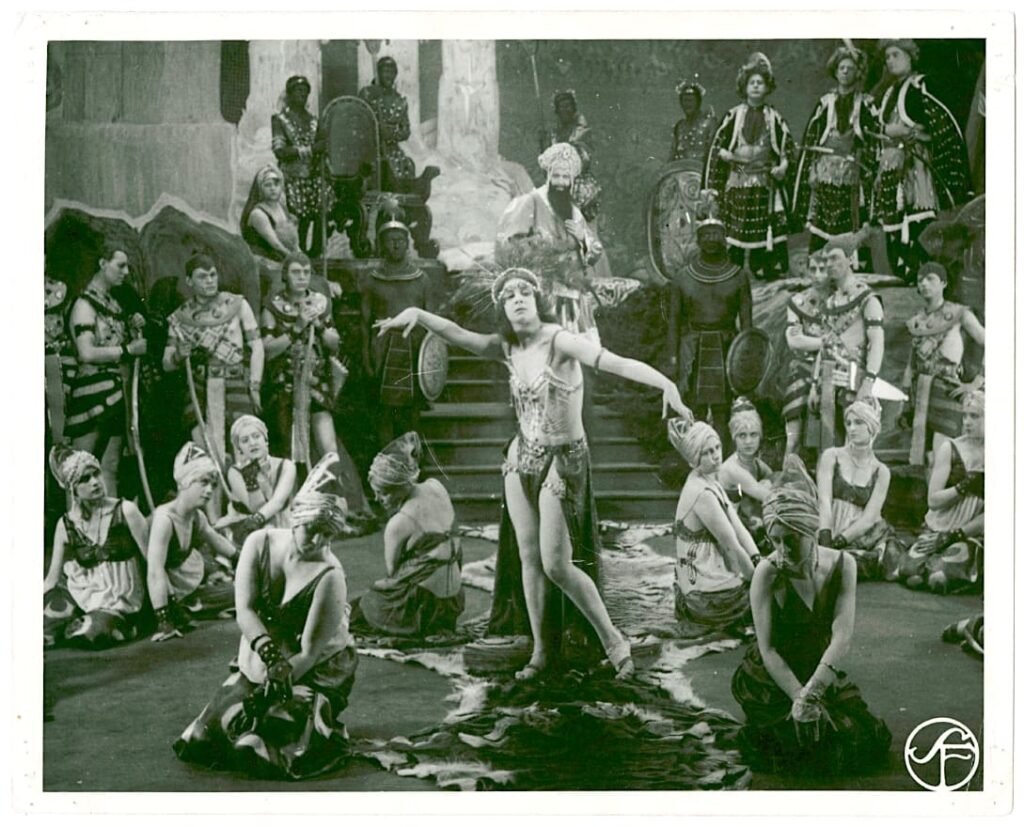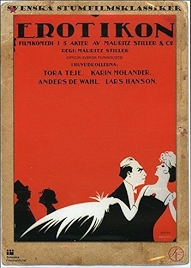What else did the director Mauritz Stiller do, apart from discover Greta Garbo and take her to America? Erotikon is one answer, a cult silent movie remarkably triumphing in a genre that usually needs dialogue to succeed.
It’s a farce and Stiller gets it up and running in two opening scenes sketching his two main characters. In one corner Leo Charpentier, a professor of entomology who can wax lyrical about the sexual proclivities of the male beetle – how it likes to put it about a bit, in short – without ever realising that the same might apply to a) the female beetle, b) a human subject and c) most pertinently, his wife.
We meet the wife, in a carriage outside Leo’s university, en route to meet a furrier and then on for an assignation with a rich Baron who owns a plane and has promised to give her a ride – innuendo duly noted. A libertine with freethinking ideas about love, Irene is actually the one taking others for a ride. She’s not only deceiving her husband with the Baron, who she’s just stringing along, her heart actually belongs to Preben, a sculptor and the professor’s best friend.
As for the professor, an unworldly man, he can’t see what’s going on below his nose, even in his own house, unless it’s beetle-shaped. As well as being entirely oblivious to his wife’s activities, he’s not noticed that his niece, Marthe, is constantly making eyes at him.
Characters introduced, Stiller then pushes them into tension – Preben becoming aware of the Baron’s existence and instantly jealous of him. Young Marthe increasingly edging towards the uncle in “don’t stand so close to me” attitudes. Irene aggravated by the sight of a mystery woman buying a feather boa in a shop and putting it on Preben’s account. Meanwhile, the professor is floating above it all, the benign fool.
Good farces are like springs wound almost to breaking point before everything abruptly releases. Generally, by the end things have re-arranged themselves, and everyone is in a different place, though not necessarily the one they were expecting.
But before all that happens in this movie, a lengthy interlude at the theatre, where the professor and his wife, the Baron and the sculptor all meet up and she flashes and twinkles away at each of them in turn. Meanwhile, on stage, a ballet is being danced about a shah and his unfaithful wife – just in case we hadn’t got the message.
What is it about this film that makes it a cult item? Well, for one, the acting is exquisite, it really is, light as air, remarkably fluid, expressive and yet understated, especially for the silent era. Tora Teje is particularly good as Irene, sexy, sexual and knowing and yet somehow also quite sweet. (The fact that Teje bears a passing resemblance to Timothée Chalamet is just a quiet bonus.) Anders de Wahl as the professor plays the educated dunce expressively. Karin Molander the lovestruck niece is all girlish charm rather than jailbait moves and Lars Hanson plays sculptor/lover Preben as a man much given to moments of wounded introspection and pathos. We feel for these people even as we laugh at them. Vilhelm Bryde as the Baron not quite so much. He’s the fall guy though, being rich, he tends to fall on his feet.
It is a female-centric story – the men in this tend to be either fools (the Professor) or puffed-up with their own self-importance (the Baron). Also wheeled on and off for comedic effect periodically is an ancient colleague of the professor (Torsten Hammarén), another entomologist who’s the epitome of the absent-minded professor.
It’s shot simply, mostly with a static camera, though Stiller chooses his vantage points well and makes use of vignettes at key moments, so our focus is exactly where he wants it. He also tries to get his characters as big in the frame as he can without losing scene-setting detail. At one point he takes his camera into the air on the Baron’s plane, and it looks like he’s done it for real. That’s pretty unusual for 1920.
There are a lot of intertitles and there’s probably too much ballet sequence, though this might come down to the version you’re watching, if there are different versions (if anyone knows, please share). I watched a 96-minute version, but both the IMDb and Wikipedia say the film runs 106 minutes. The British Board of Film Classification gave it a new certificate in 2021 and it was 97 minutes’s long at that point. The Swedish Film Database says 106 minutes, where it’s also stated that Erotikon was shot at 18 frames per second. Which might explain the different “versions” – different projection speeds and nothing more.
1920 is a long time ago but the film holds up really well. The image a bit less so but it isn’t bad. A little soft, the highlights bleaching away a touch here and there. But it’s good enough to see the performances, and it’s the performances – realistic, mobile, energetic (like Garbo, in fact) – that make it.
Erotikon – Watch it/buy it at Amazon
I am an Amazon affiliate
© Steve Morrissey 2024

